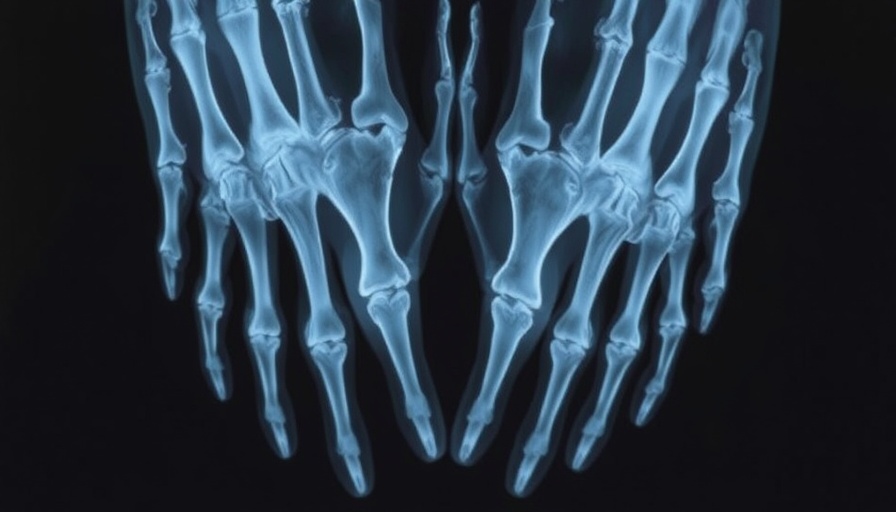
Microplastics and Human Health: A Growing Concern
Recent research has raised alarms regarding the discovery of microplastics deep inside human bones, shedding light on a complex health dilemma that is escalating in global importance. With microplastics having infiltrated various facets of our physiology, concerns regarding their implications for bone health have reached critical levels. A meta-analysis led by scientists highlights the presence of microplastics in human bone tissue, linking them to a multitude of health risks, including various bone diseases.
The Unseen Threat: How Microplastics Enter Our Bodies
Microplastics - tiny plastic particles less than 5mm in size - are a byproduct of plastic production and environmental degradation. They have been found in water sources, food supplies, and even in human tissues, signaling a staggering integration into our biological systems. The International Union for Conservation of Nature and Natural Resources reported that over 500 million tons of plastic are produced annually, with around 22 million tons polluting the environment, a statistic that terrifies health experts worldwide.
Potential Health Implications: Effects on Bones
For years, medical practitioners have sounded the alarm over the dangers posed by microplastics. Their effects extend beyond environmental concerns, with recent studies suggesting a direct impact on human bone health. Evidence indicates that microplastics can compromise bone marrow functions, which are vital for the production of blood cells. A breakdown in bone health not only poses risks for fractures and osteoporosis but could also hinder red and white blood cell formation, undermining the body’s immune responses.
The Scientific Pursuit: What Research Reveals
Rodrigo Bueno de Oliveira, a leading author of the meta-analysis, emphasizes the need for comprehensive research to delineate the relationship between microplastics and bone diseases. This area of study is pivotal, given that both bones and bone marrow are essential for maintaining overall health. As Oliveira states, “Although osteometabolic diseases are relatively well understood, there's a gap in our knowledge regarding the influence of microplastics on the development of these diseases.” The knowledge gap must be addressed, as understanding how microplastics infiltrate our bodies could lead to better preventive measures.
Societal and Environmental Impacts: A Broader Perspective
Microplastics are emblematic of a larger issue concerning plastic consumption and waste management in modern society. Beyond health considerations, their pervasiveness in the environment suggests a failure to adequately address the consequences of plastic production. Solutions must be multi-faceted, including enhanced recycling methodologies, public awareness campaigns, and stricter regulations around plastic use and disposal. Only through holistic initiatives can we hope to mitigate the impacts of microplastics on both human health and the environment.
Conclusion: The Call for Action
The troubling presence of microplastics in human bones is not just an isolated issue but a symptom of an urgent global challenge. As individuals and communities, we must engage in proactive discussions about plastic usage and its long-term repercussions. Staying informed and advocating for change on both personal and societal levels is paramount. Understanding the implications of microplastics could propel us towards a safer, healthier environment.
 Add Row
Add Row  Add
Add 




Write A Comment